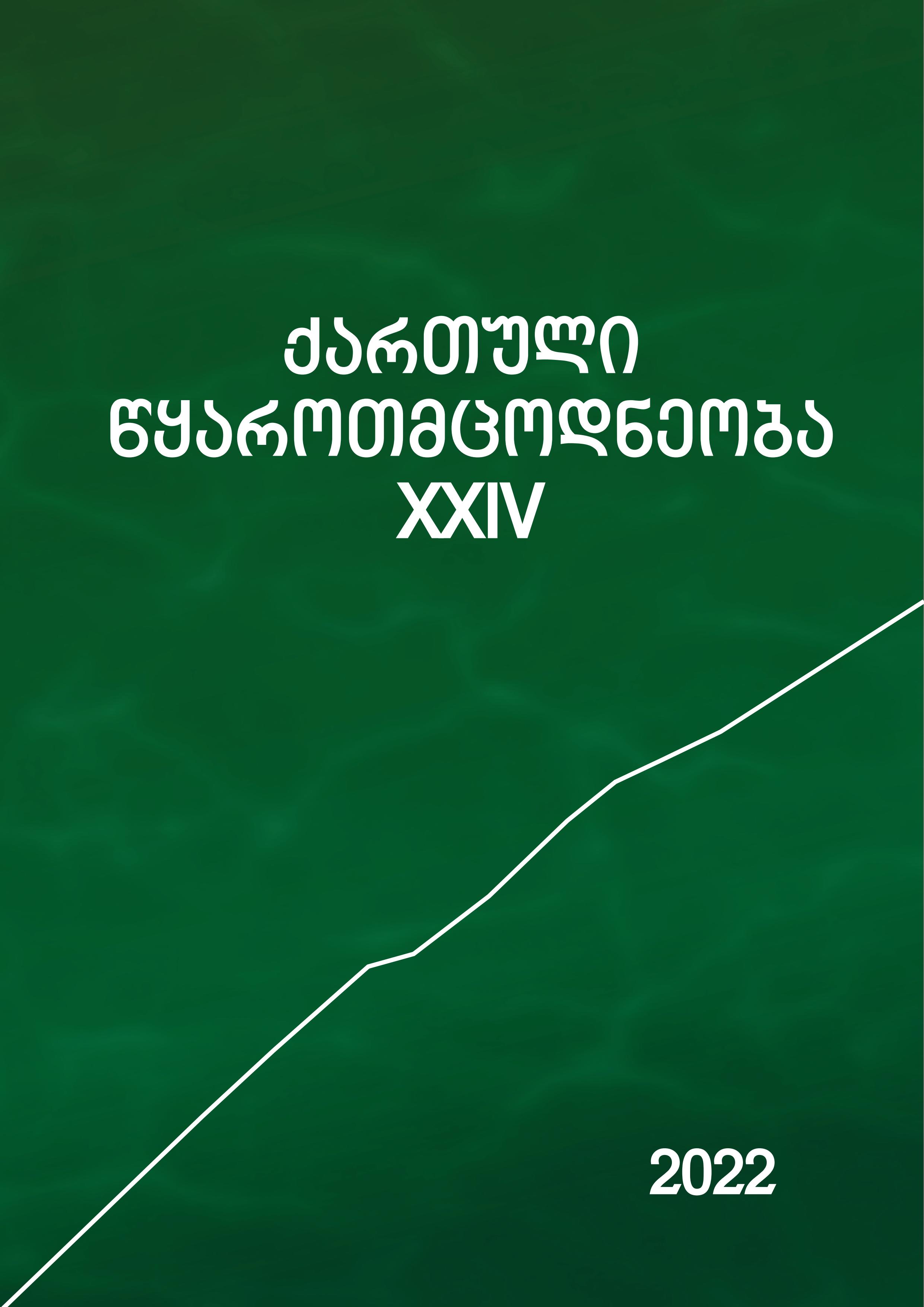“Coin with Five Crosses” and Dangers of Quoting in Scholarly Articles
Abstract
The paper aims at responding to the critique presented by Ms. Nino Javelidze in her article published in
Proceedings of the Georgian National Academy of Sciences in 2022. The author criticizes political alliance of King David Aghmashenebeli and the Crusaders conjectured in my book David Aghmashenebeli Numismatic Heritage, printed in 2022. Ms. Javelidze puts much eVort in discussing the provenance of the state flag. The
author enthusiastically argues against representation of five-cross banner on the reverse of coins bearing portrayal of King David. The point is just that there is no mention (not even passim!) of the flag and its representation
on coins in my book. It is a complicated task to respond to the criticism of non-existent assumptions,
but inaccurate quoting might lead readers to wrong impressions, hence a few explanatory comments of mine. Ms. Javelidze also doubts findings of iconographic research presented in my book that ascertain reverse
type of David’s coins as reflection of crusaders’ symbolism. She brings as an example a coin minted by Charles Emmanuel I Duke of Savoy (1580-1630). Let alone iconographic dissimilarity of crosses, the graver is methodological faulty of historical research – the author juxtaposes a coin struck in 1118 and one minted in the 16th
century! Likewise, unexpected is an attempt to connect the military standards depicted on the Achaemenid coins to the five-cross composition and argue against its spread in Orthodox Georgia. I agree with the author
that there are no Achaemenid five-cross military standards attested on archaeological monuments of Christian
Georgia. There are though representations of labarum (labarum cross among them) evidenced in mural
paintings and numismatic sources.
Ms. Javelidze also endeavoured to alter the basics of the numismatic discipline. That is to say, to present
Crusaders’ coins as a leading currency of the world. Again, she brings in coins dating to the 13-14th centuries as validating examples which is simply methodologically wrong.
I would like to elucidate the matter by pointing out that the monetary system of any country, Georgia
included, was shaped on the basis of an international monetary system of a given historical epoch, which,
in turn, was established by leading political powers on international scale, e. g. Byzantium for the period of
David’s reign. World numismatic is also familiar with interlocal coins as staters of Alexander the Great in Antiquity, Arab dirhams or Persian abbasi, etc. We cannot regard the Latin Empire a state of preeminent importance,
ranking equal to the above powers, therefore, coins minted by them should be considered a local coinage with pretty limited area of circulation. Thus, the critique suggested by Ms. Javelidze seems to be based on a very peculiar perception of a scholarly text and, unfortunately, will not contribute much to scholarly discourse, let alone misguided reader.
Downloads
Published
License

This work is licensed under a Creative Commons Attribution-NonCommercial 4.0 International License.

